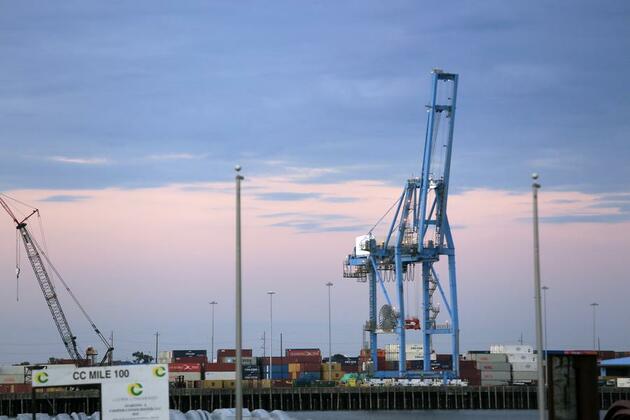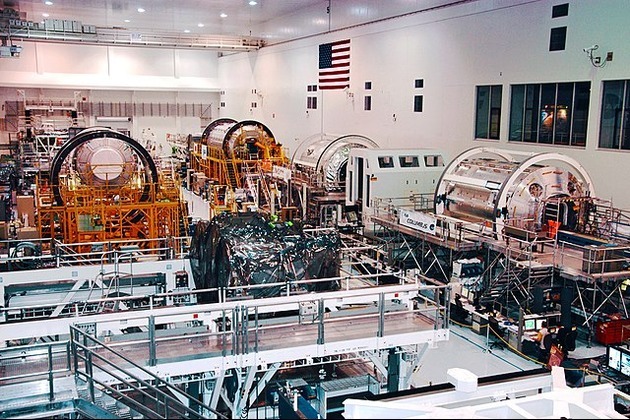Column: Is China to blame for U.S. manufacturing job loss?
Xinhua
26 Jun 2025, 15:45 GMT+10

In reality, China, as the second-largest source of U.S. imports, supplies high-quality, competitively priced goods that have helped fill store shelves, ease inflation and deliver real savings to American consumers.
by Mei Xing
Recently, there has been an argument about the so-called "China shock" being the reason for job losses in the United States. But a more nuanced approach is necessary to explain the contraction of manufacturing jobs in the United States, including the overall economic dynamics in developed countries, automation and a combination of domestic factors.
GLOBAL MANUFACTURING DECLINE
The Groningen Growth and Development Centre in the Netherlands finds that manufacturing employment typically follows an inverse U-shape: it rises during early industrialization but declines as economies advance and consumer demand shifts toward services. This leads to a gradual movement of labor from manufacturing into the service sector. Take the United States itself for example:
In 1950, goods accounted for around 60 percent of American consumption; today they represent just a third of spending and just 10 percent of national jobs.
According to a senior fellow at the American Enterprise Institute (AEI), manufacturing job losses in developed economies began well before China joined the WTO in 2001.
A 2025 JPMorgan analysis also indicates that this structural shift occurred regardless of trade deficits, noting similar drops in countries like Germany and Japan -- both of which consistently ran trade surpluses.
AUTOMATION DRIVES LOSSES
Automation, not trade, has been the main driver of manufacturing job losses in the United States, as pointed out in a recent op-ed by Nobel Laureate James J. Heckman and economics professor at the University of Pennsylvania Hanming Fang.
Research also shows that the adoption of industrial robots in the United States from 1990 to 2007 led to a loss of 360,000 to 670,000 jobs. So, even if the United States completely stops importing from China, many jobs will still be replaced by robots.
A number of solid research pieces also make the same case:
Professors at Ball State University in Indiana pointed out that between 2000 and 2010, only about 13 percent of U.S. manufacturing job losses could be attributed to international trade, with the remaining driven by productivity gains (automation, efficiency and technology improvements).
Recent AEI research suggests that manufacturing job shrinkage has been driven largely by productivity gains rather than offshoring alone: from 2001 to 2024, U.S. manufacturing employment fell by approximately 22 percent, but real manufacturing output increased by about 40-50 percent over the same period.
DOMESTIC JOB PRESSURES
Higher costs of labor: Per capita wages per hour in the United States are six to eight times higher than those of emerging markets.
Tariff hikes can backfire: Although high steel tariffs delivered modest gains to U.S. steelmakers, downstream manufacturing sectors -- such as auto, appliance and machinery industries -- faced much higher costs, leading to significant job losses across those industries.
Domestic, interstate shifts of manufacturing jobs: A study by Middlebury College recently emphasized that manufacturing jobs lost in the Rust Belt in the United States weren't offshored overseas but relocated to Southern states such as Alabama, South Carolina, Georgia and Tennessee. This means that it is unfair to put the blame completely on other countries.
Reluctance to take factory jobs and a lack of skilled labor: According to a 2024 Cato Institute survey, only 25 percent of Americans said they'd personally be better off working in a factory -- even though 80 percent favored more manufacturing jobs nationally.
The Alliance for American Manufacturing reports that by early 2025, around 20.6 percent of U.S. factories were operating below capacity due to labor shortages. Meanwhile, the U.S. Department of Labor noted approximately 381,000 unfilled manufacturing positions in April 2025.
It is therefore both inaccurate and unconstructive to scapegoat China for employment challenges in the United States.
In reality, China, as the second-largest source of U.S. imports, supplies high-quality, competitively priced goods that have helped fill store shelves, ease inflation and deliver real savings to American consumers.
China is also the third-largest market for U.S. exports: roughly 50 percent of American soybean exports, 30 percent of cotton exports, 17 percent of integrated circuit exports, 10 percent of U.S. exports of coal, liquefied petroleum gas and medical equipment go to China -- collectively supporting around 860,000 American jobs.
Editor's note: Mei Xing is an observer of international affairs.
The views expressed in this article are those of the author and do not necessarily reflect the positions of Xinhua News Agency.
 Share
Share
 Tweet
Tweet
 Share
Share
 Flip
Flip
 Email
Email
Watch latest videos
Subscribe and Follow
Get a daily dose of Japan Herald news through our daily email, its complimentary and keeps you fully up to date with world and business news as well.
News RELEASES
Publish news of your business, community or sports group, personnel appointments, major event and more by submitting a news release to Japan Herald.
More InformationAsia Pacific
SectionMonsoon floods batter China, raising climate concerns
BEIJING, China: Extreme weather is once again testing China's resilience, as intensifying monsoon rains trigger floods across major...
SCO defence ministers visit 2018 summit venue in Qingdao
Qingdao [China], June 26 (ANI): Defence Ministers of the Shanghai Cooperation Organisation (SCO) visited the Qingdao International...
EAM Jaishankar greets Madagascar on 65th Independence Day
New Delhi [India], June 26 (ANI): External Affairs Minister S. Jaishankar extended greetings to Madagascar on the occasion of the 65th...
"RPL is exposure Indian Rugby needed": Mohit Khatri eyes bigger goals with Bengaluru Bravehearts
By Diptayan Hazra Mumbai (Maharashtra) [India], June 26 (ANI): India's rugby landscape is entering a thrilling new era, and leading...
Column: Is China to blame for U.S. manufacturing job loss?
In reality, China, as the second-largest source of U.S. imports, supplies high-quality, competitively priced goods that have helped...
Rajnath Singh meets Belarusian counterpart on sidelines of SCO summit in Qingdao, China
Qingdao [China], June 26 (ANI) Defence Minister Rajnath Singh met with his Belarusian counterpart Lieutenant General Viktor Gennadievich...
Business
SectionAmazon still trails UK grocers on fair supplier treatment
LONDON, U.K.: Amazon has once again been rated the worst major UK grocery retailer by its suppliers when it comes to following fair...
How Chinese vapes reach US stores despite import restrictions
LONDON/NEW YORK/CHICAGO: In suburban Chicago, just 15 minutes from O'Hare International Airport, a small customs brokerage quietly...
Wall Street trades sideway as Mideast tensions subside
NEW YORK, New York, - U.S. stocks were split, but little moved Wednesday after a positive start to the week heralded by a two-day rally....
Tesla robotaxi trials begin in Austin
NEW YORK CITY, New York: Elon Musk is taking a big step toward making his long-promised robotaxi dream a reality. Over the weekend,...
Toyota hikes US auto prices, says move is not tariff-driven
PLANO, Texas: Toyota Motor will raise prices across a range of vehicles in the United States starting next month, the Japanese automaker...
Tariffs, inflation raise stagflation risk as Fed eyes next move
WASHINGTON, D.C.: U.S. business activity showed signs of softening in June while inflationary pressures continued to build, driven...












